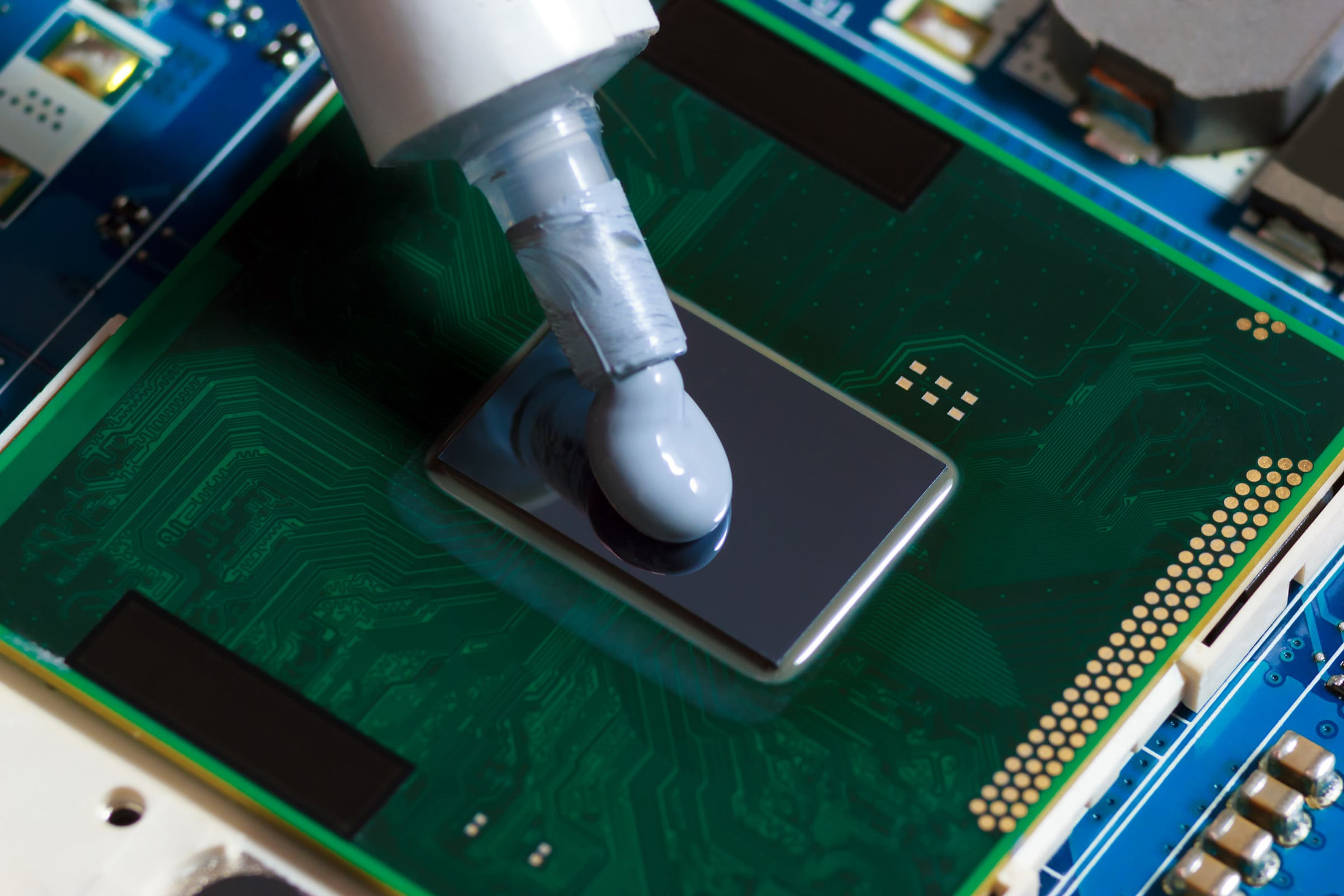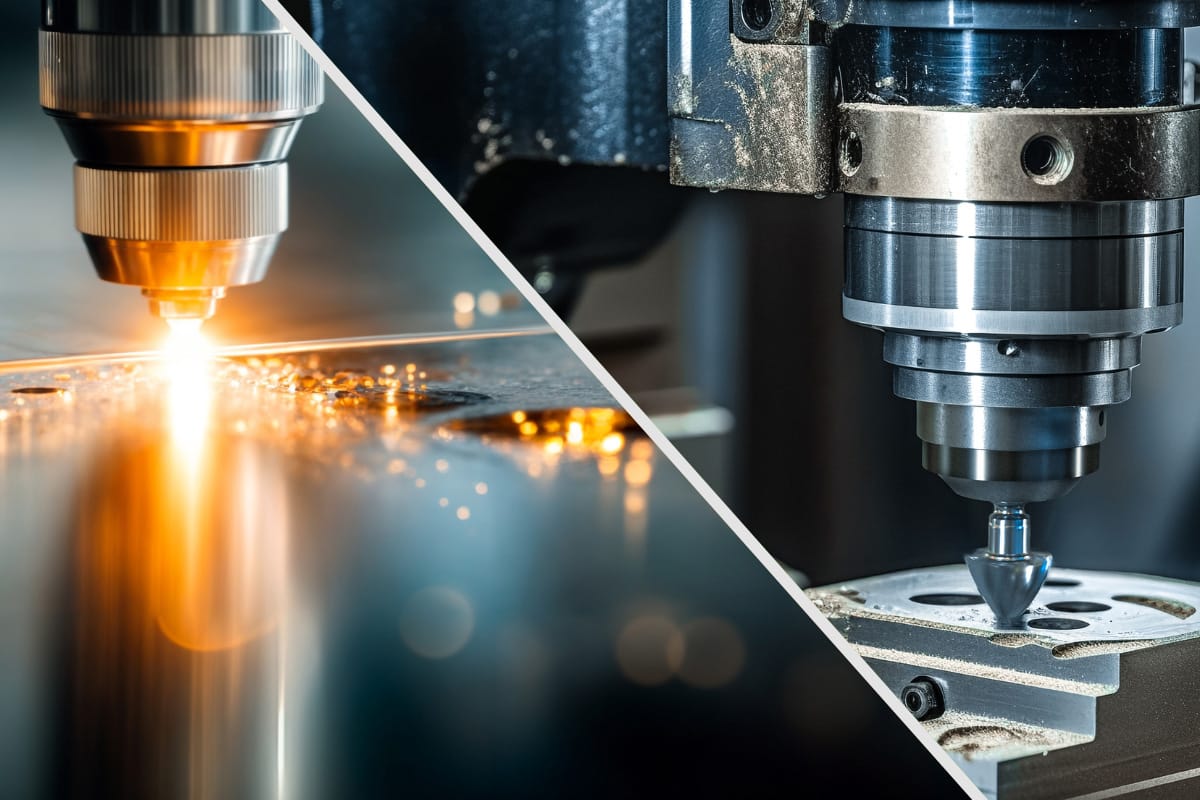From smartphones to industrial machinery, electronic devices are essential to our daily lives and operations. Protecting these components from environmental and mechanical stressors is crucial for maintaining their performance and durability.
Advanced coating technologies have evolved to meet this need, providing solutions that enhance the lifespan and functionality of electronic components. This article explores various advanced coating techniques and their benefits.
The Importance of Protecting Electronic Components
Electronic components are highly susceptible to environmental factors such as moisture, dust, chemicals, and temperature fluctuations. These vulnerabilities can lead to serious consequences, including short circuits, corrosion, and complete failure of the components. Protective coatings play a crucial role in mitigating these risks, enhancing the lifespan and performance of electronic devices.
3 Types of Advanced Coating Technologies
1. Conformal Coatings
Conformal coatings are thin, protective layers that conform to the contours of electronic components. They provide a barrier against environmental contaminants and mechanical stress, ensuring the integrity and functionality of the components. These coatings are typically applied in a liquid form and then cured to create a solid film that adheres closely to the surface of the components.
Types of Conformal Coatings:
Acrylic. Acrylic coatings are known for their ease of application and removal. They provide good moisture resistance and are typically transparent, allowing for easy inspection of coated components. Commonly used in consumer electronics and general-purpose applications, acrylic coatings are quick-drying, cost-effective, and repairable.
Silicone. Silicone coatings are highly flexible and offer excellent temperature resistance, making them suitable for components exposed to extreme thermal conditions. Widely used in the automotive and aerospace industries, silicone coatings provide high flexibility, superior thermal stability, and good dielectric properties.
Urethane. Urethane coatings provide excellent chemical resistance and good moisture protection. They form a hard, durable finish that is difficult to remove once cured. These coatings are suitable for industrial applications and harsh environments where chemical exposure is a concern, offering high durability and strong adhesion.
Epoxy. Epoxy coatings offer strong adhesion and mechanical protection. They are rigid and provide excellent resistance to moisture and chemicals. Ideal for applications requiring robust mechanical protection, such as heavy machinery and industrial electronics, epoxy coatings are known for their high strength and protective qualities.
Parylene. Parylene coatings are unique in that they are applied as a vapor, forming a pinhole-free, uniform layer even on complex geometries. They offer high dielectric strength and are extremely thin. Used in medical devices, aerospace, and other high-reliability applications, parylene coatings provide highly uniform coverage, excellent electrical properties, and biocompatibility.
Applications of Conformal Coatings:
Conformal coatings are essential for protecting electronic components from environmental and mechanical stressors across various industries. In the automotive sector, they safeguard electronic control units (ECUs) and other critical components from harsh operating conditions. In aerospace, these coatings ensure the reliability of avionics and other systems exposed to extreme temperatures and altitudes. Consumer electronics benefit from conformal coatings by extending the life of devices like smartphones and tablets, protecting them from moisture and dust. In industrial electronics, conformal coatings protect machinery control systems and sensors from chemical exposure and mechanical wear.
2. Potting and Encapsulation
Potting and encapsulation are techniques used to protect electronic components by embedding them in a solid or gel-like material. These methods involve the use of various materials to create a protective barrier around the components, shielding them from environmental stressors such as moisture, dust, chemicals, and mechanical shock. The primary difference between the two lies in their application methods and materials used.
Types of Potting and Encapsulation Materials:
Silicone. Silicone potting compounds offer remarkable flexibility and thermal stability, making them ideal for components that undergo significant temperature fluctuations. These materials are commonly used in automotive and aerospace applications due to their excellent electrical insulation and ability to handle thermal cycling.
Epoxy. Epoxy compounds are renowned for their robust adhesion and mechanical protection. They create a hard, durable barrier that effectively resists moisture and chemicals, making them perfect for industrial and heavy machinery applications that require strong mechanical protection.
Urethane. Urethane potting materials are noted for their toughness and superior chemical resistance. They are less rigid than epoxies, offering good mechanical protection while maintaining flexibility. Urethane is suitable for harsh environments, including industrial settings and outdoor electronics, where durability and chemical resistance are crucial.
Low-Pressure Molding. Low-pressure molding uses specialized hot-melt adhesives to encapsulate electronic components quickly and efficiently. This method minimizes the risk of damaging sensitive components compared to traditional high-pressure techniques, making it ideal for consumer electronics, automotive electronics, and cable assemblies needing gentle yet effective encapsulation.
Applications of Potting and Encapsulation:
Potting and encapsulation techniques are crucial for enhancing the longevity and reliability of electronic components, especially in harsh environments. In the automotive industry, they protect electronic modules, sensors, and connectors from heat, vibration, and fluid exposure. Aerospace applications rely on these methods to ensure the reliability of avionics and other components at extreme altitudes and temperatures. Industrial electronics, such as control systems and power supplies, are safeguarded from chemical exposure and mechanical wear. Additionally, consumer electronics used in rugged conditions or outdoor environments benefit from the added protection provided by potting and encapsulation.
3. Nano-Coatings
Nano-coatings are ultra-thin layers of protective material applied to electronic components using advanced techniques such as vapor deposition or spraying. These coatings, typically only a few nanometers thick, create a protective barrier that offers superior protection compared to traditional coatings. Nano-coatings are designed to provide enhanced performance while being minimally intrusive, making them ideal for sensitive electronic devices.
Characteristics of Nano-Coatings:
Thickness and Durability. Nano-coatings are exceptionally thin, typically measuring only a few nanometers. Despite their minimal thickness, they offer robust protection against various environmental stressors, ensuring the durability of electronic components.
Hydrophobic Properties. Many nano-coatings are hydrophobic, meaning they repel water and prevent moisture from reaching the electronic components. This property is crucial for protecting sensitive devices from moisture-related damage.
Chemical Resistance. Nano-coatings are resistant to a wide range of chemicals, making them suitable for use in harsh environments. This chemical resistance enhances the longevity and reliability of the protected components.
Transparency. Nano-coatings are typically transparent, allowing for easy inspection of the coated components without the need to remove the protective layer. This transparency is beneficial for maintaining the aesthetics and functionality of consumer electronics and other devices.
Enhanced Properties Compared to Traditional Coatings. Unlike traditional coatings, which can be relatively thick and may affect component performance, nano-coatings are ultra-thin and unobtrusive. They provide superior protection in terms of durability, hydrophobicity, and chemical resistance. The advanced application methods ensure an even and consistent layer, offering more efficient and effective protection.
Applications of Nano-Coatings:
Nano-coatings are versatile and used in various industries to enhance the durability and performance of electronic components. In consumer electronics, they protect devices like smartphones and tablets from moisture, dust, and fingerprints, improving usability and longevity. The medical field utilizes nano-coatings to shield sensitive electronic devices from contaminants, ensuring biocompatibility for devices in contact with the human body. Automotive and aerospace sectors benefit from nano-coatings by protecting critical electronic components in vehicles and aircraft from extreme environmental conditions and mechanical stress. In industrial settings, nano-coatings enhance the reliability and lifespan of electronic control systems and sensors exposed to harsh chemicals, moisture, and dust.
Benefits of Advanced Coating Technologies
Advanced coating technologies are essential for providing comprehensive protection and performance enhancement for electronic components across various industries. Here are the main benefits of these coating techniques:
Enhanced Protection
Advanced coatings, including conformal coatings, potting, encapsulation, and nano-coatings, provide a robust barrier against environmental stressors such as moisture, dust, chemicals, and mechanical impact. These protective layers ensure the integrity and longevity of electronic components used in diverse applications, from automotive control units to aerospace avionics and consumer electronics.
Improved Performance
The application of advanced coatings significantly enhances the thermal management and electrical insulation properties of electronic components. Conformal coatings and nano-coatings, in particular, improve the overall performance of devices by preventing overheating and ensuring consistent functionality in harsh environments. Potting and encapsulation materials like silicone further aid in heat dissipation, maintaining optimal operating conditions.
Mechanical Stability
Potting and encapsulation techniques are particularly effective in providing mechanical stability to electronic components. By protecting against shocks and vibrations, these methods prevent physical damage to sensitive parts, ensuring reliable performance in automotive, aerospace, and industrial settings where mechanical stress is a constant concern.
Longevity
All advanced coatings contribute to extending the operational life of electronic components. Conformal coatings help prevent corrosion and electrical failures, while potting and encapsulation shield against environmental and mechanical damage. Nano-coatings, with their superior protective properties, further extend component lifespans by preventing various forms of degradation, making them ideal for high-performance and sensitive applications.
Cost Efficiency
Advanced coatings offer significant cost savings over the lifespan of electronic devices. By reducing the need for frequent repairs and replacements, these coatings minimize maintenance costs and prevent costly downtime. The enhanced durability provided by conformal coatings, potting, encapsulation, and nano-coatings ensures long-term reliability, ultimately saving resources and reducing operational expenses.
Versatility and Adaptability
The flexibility of advanced coatings allows them to be tailored to specific application requirements and environmental conditions. Conformal coatings, potting, encapsulation, and nano-coatings can all be applied using various methods, such as spraying, dipping, brushing, and automated processes. This adaptability ensures that electronic components in the medical, automotive, industrial, and consumer electronics sectors receive the optimal level of protection and performance enhancement.
Considerations in Choosing the Right Coating Technology for Your Project
Selecting the appropriate coating for your electronic components is critical to ensuring optimal protection and performance. Here are key factors to consider:
Environmental Conditions
- Temperature Range: Consider the operating temperature range of the components. Some coatings, like silicone, provide excellent thermal stability, while others may be more suitable for moderate conditions.
- Moisture and Humidity: If the components will be exposed to high levels of moisture or humidity, coatings with strong moisture resistance, such as acrylic or parylene, should be considered.
- Chemical Exposure: Evaluate the potential exposure to chemicals and select coatings like urethane or epoxy, known for their chemical resistance.
Mechanical Stress
- Vibration and Shock: For components subject to frequent mechanical stress, coatings that offer flexibility and mechanical protection, such as silicone or epoxy, are ideal.
- Abrasion and Wear: In environments where abrasion is a concern, durable coatings like epoxy can provide the necessary protection.
Electrical Requirements
- Dielectric Strength: Consider the electrical insulation properties required for the components. Coatings with high dielectric strength, such as parylene, are suitable for high-reliability applications.
- Thermal Management: Coatings that enhance thermal dissipation, such as nano-coatings, can help maintain the performance and longevity of components.
Application Methods
- Ease of Application: Evaluate the application method that suits your manufacturing process. Some coatings are easier to apply and remove, like acrylic, while others may require specialized equipment, such as vapor deposition for nano-coatings.
- Consistency and Coverage: Ensure that the chosen coating method provides consistent coverage, especially for complex geometries. Methods like low-pressure molding can offer uniform protection for intricate designs.
Material Compatibility
- Substrate Materials: Ensure the coating material is compatible with the substrate of the electronic components to prevent adverse reactions or adhesion issues.
- Coating Interaction: Consider how different coatings interact if multiple layers are required. Some coatings may not adhere well to others, affecting overall protection.
Regulatory and Compliance Requirements
- Industry Standards: Ensure the selected coatings comply with relevant industry standards and regulations, such as RoHS (Restriction of Hazardous Substances) or UL (Underwriters Laboratories) certifications.
- Environmental Impact: Consider the environmental impact of the coatings, including their composition and disposal methods. Eco-friendly coatings can be an important factor for sustainable practices.
Expert Consultation
- Consulting with Experts: Work with industry experts or coating manufacturers to select the most suitable coating for your specific needs. Their expertise can help navigate complex requirements and ensure optimal protection.
Innovations and Future Trends in Coating Technologies
The future of coating technologies is bright, with continuous advancements transforming the protection and enhancement of electronic components. Here are some trends to watch:
Self-Healing Coatings
These coatings can automatically repair minor damages like scratches or micro-cracks by releasing healing agents when damaged. This innovation extends the lifespan of components by maintaining the integrity of the protective layer, reducing maintenance needs.
Bio-Based Coatings
Derived from renewable resources, bio-based coatings provide eco-friendly protection while minimizing environmental impact. They help companies meet regulatory requirements and support sustainability initiatives.
Advanced Nano-Coatings
New formulations of nano-coatings offer enhanced properties such as superhydrophobicity, anti-fouling, and anti-corrosion capabilities. These coatings improve the performance and reliability of electronic devices, even in harsh environments.
Conductive Coatings
Containing materials like carbon nanotubes or metallic nanoparticles, conductive coatings create electrically conductive surfaces on components. They enable more efficient and compact designs, useful for touchscreens, sensors, and flexible electronics.
Innovative Application Techniques
Techniques like plasma-enhanced chemical vapor deposition (PECVD) and atomic layer deposition (ALD) allow for precise and uniform coating application at the nanoscale. These methods ensure consistent protection and reduce material waste.
Smart Coatings
Designed to respond to environmental stimuli such as temperature, light, or pressure, smart coatings provide dynamic protection. They can be used in applications ranging from temperature-sensitive electronics to adaptive camouflage in military contexts.
Integration with IoT and Industry 4.0
Advanced coatings integrated with IoT and Industry 4.0 technologies enable real-time monitoring and predictive maintenance. Embedded sensors provide data on the condition and performance of the coatings, facilitating proactive maintenance and enhancing system reliability.
Reliable Protection for Electronics: Trust IMS’s Coating Technologies
Advanced coating technologies are essential for protecting and enhancing electronic components, ensuring they can withstand various environmental and mechanical stressors. From conformal coatings and potting techniques to nano-coatings, each type offers unique benefits that contribute to the durability, performance, and longevity of electronic devices. As the industry continues to innovate, new materials and application methods promise even greater protection and efficiency.
For expert advice and cutting-edge solutions in advanced coating technologies, trust IMS Electronics Manufacturing. Our team is ready to help you choose the best protective solutions for your electronic components, ensuring they perform reliably in any environment. Contact us today to learn more about how IMS can enhance the durability and performance of your electronics.




